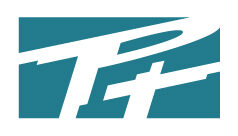Looking back at 2024 can feel a bit like excavating an archaeological site—a lot to uncover and plenty of meaning hidden beneath the surface. It’s not just about numbers and figures but about the real-life experiences that shaped your journey this past year. Figuring out what went well and what didn’t can set the stage for a more informed and strategic 2025.

Evaluating past performance isn’t merely about patting yourself on the back for the wins or dwelling on the things that didn’t go as planned. It’s a chance to dissect customer behavior shifts, like the ones that might have left you scratching your head last year. Maybe there was a surge in demand you didn’t expect or a drop in interest that seemed out of the blue. Understanding these patterns can offer valuable clues on how to better meet your customers where they are.
Another area worth a microscope is supply chain management. Did your supply chains flow like a well-oiled machine, or were there hiccups that caused delays and frustration? Sometimes, global events can throw a wrench in the best-laid plans, but that doesn’t mean you can’t adapt. Use those experiences to build more resilient systems going forward.
Don’t forget about technological advancements. Maybe you integrated new tech tools that either boosted productivity or didn’t deliver as anticipated. Reflecting on tech success stories or headaches can provide clear direction on future tech investments.
Take these reflections seriously as you strategize for 2025. By learning from 2024’s ups and downs, you set a foundation that not only prevents past mistakes but also builds on your strengths, aligning your business closely with its vision for the future.
Grasping Emerging Trends in 2025
With 2025 on the horizon, it’s time to fine-tune your radar to spot the trends that’ll shape the business landscape. Technology and innovation are more than just buzzwords—they’re the driving forces transforming industries worldwide.
AI is here, not as a futuristic concept, but as a present-day game-changer. Companies embedding AI into their operations aren’t just optimizing processes—they’re reimagining what’s possible. Think beyond chatbots; imagine AI helping to predict market shifts or optimize supply chains. It’s about unlocking potential, pushing boundaries, and finding new efficiencies.
Sustainability is shifting from a ‘nice-to-have’ to a ‘must-have.’ Consumers now demand more eco-friendly choices. Integrating sustainability into your processes isn’t just about ticking boxes—it’s about gaining trust and building a reputation for being forward-thinking. This means cutting down waste, opting for greener energy solutions, and being transparent about your carbon footprint.
The workforce is evolving too, with flexible work arrangements becoming the norm rather than the exception. Companies embracing hybrid models can tap into global talent pools, fostering diversity and innovation. It’s no longer about where you work, but how you work and what you achieve. Adaptability will be your secret weapon here.
While all industries feel the change, sectors like tech, retail, and manufacturing might see more drastic shifts. Staying competitive means keeping your ear to the ground and being ready to pivot. Keeping up with these trends ensures that you’re not just surviving 2025 but thriving within it.
Establishing Quantifiable and Achievable Goals
Setting goals for 2025 isn’t just about grand visions; it’s about being crystal clear on what you want to achieve and how to measure success. This is where SMART goals come into play, giving structure to ambitions and ensuring they’re grounded in reality.
Let’s make it practical. Instead of saying, “Boost profits,” aim for something specific like, “Increase digital revenue by 25% through enhanced customer data analytics.” You’re not just looking for growth; you’re charting a precise path to get there.
Every goal should align with the bigger picture of your business. Think about company growth, market position, and, importantly, customer satisfaction. A well-defined objective isn’t just a tick on a to-do list; it’s a stepping stone to further success.
Measure progress like a scientist collecting data. Regular check-ins help to adjust strategies, celebrate small victories, and tackle challenges head-on. It’s not about perfection—it’s about consistent improvement and adaptability.
Keeping goals realistic yet ambitious pushes your team while staying grounded. Breaking down larger goals into manageable tasks keeps everyone focused and motivated, allowing you to take on 2025 with confidence.
Embracing Technological Advancements for Operational Excellence
In 2025, technology is not just an accessory to business; it’s the engine that propels success. Leveraging the right tools can make all the difference in streamlining operations and boosting efficiency, turning daunting tasks into smooth, automated processes.
Customer Relationship Management (CRM) systems can transform how you engage with clients. By keeping track of interactions, preferences, and feedback, CRM tools help build stronger relationships and personalize customer experiences, which is crucial in staying competitive.
Artificial Intelligence goes beyond novelty—it’s about making smarter business decisions based on solid data. AI can automate repetitive tasks, predict trends, or even enhance your marketing strategies, freeing up your team to focus on creativity and innovation.
Automation technologies can bring processes to life, reducing errors and saving time. Think about tasks like invoicing or inventory management—what if these could operate with minimal human intervention? That’s efficiency you can bank on.
Adapting to new technologies doesn’t mean adopting every new gadget or software. It’s about choosing solutions that align with your strategic goals and provide real value. Stay informed on the latest tech trends and keep an open dialogue with your teams to find what fits best for your business.
Embrace this digital evolution while maintaining a clear focus on your goals. As technology continues to evolve, your willingness to integrate new solutions will position you as a leader in 2025.
Diversifying Revenue Streams: Staying Resilient in 2025
To future-proof a business, it’s essential to explore multiple revenue streams. Relying on a single source is like walking on thin ice—one crack, and you’re drenched. Diversification helps cushion against market turbulence and opens up opportunities for growth.
Take a look at some companies that thrived by branching out. Those hit by product line disruptions shifted gears by expanding their services or entering new markets. This adaptability is what kept them afloat during volatile times.
Exploring new products or services doesn’t mean deviating completely from your core vision. It involves tapping into complementary areas that amplify strengths and address customer needs. Think about technology firms offering consulting services or retail businesses launching subscription models.

New markets can also present fresh revenue channels. Maybe you’ve captured your local market—why not consider regional or international expansion? Start by assessing where your products or services might fill a gap and then inch into those spaces strategically.
Be bold but grounded. Research extensively before diving into a new venture. Understand your potential new audiences just as thoroughly as your current ones. By doing so, you not only expand your revenue sources but also fortify your business against uncertainties heading into 2025.
The Wealth Signal: Amplifying Your Ability to Attract Success
Book Your Free 30-minute Business Breakthrough Session: Unlock Hidden Profits Today!
Business Growth with Credit Suite: Your Path to Better Credit and Financing
Here’s a little transparency: Our website contains affiliate links. This means if you click and make a purchase, we may receive a small commission. Don’t worry, there is no extra cost to you. It’s a simple way you can support our mission to bring you quality content.
